|
|
|
FERRARI 288 GTO
1/18 BBR
Year/Anno : 1984
Color : Red / Rosso Ferrari
My rating/Mio Voto : 90/100
Value for Money/Rapporto qualità prezzo : 75/100
Materiale: Resin / Resina
Codice: P18112
Limited: 500 units
Clicca il banner in alto per tornare alla Homepage e visionare altri modelli.
Click on the banner on the top of this page to return at the Homepage and see all the other models of my collection.
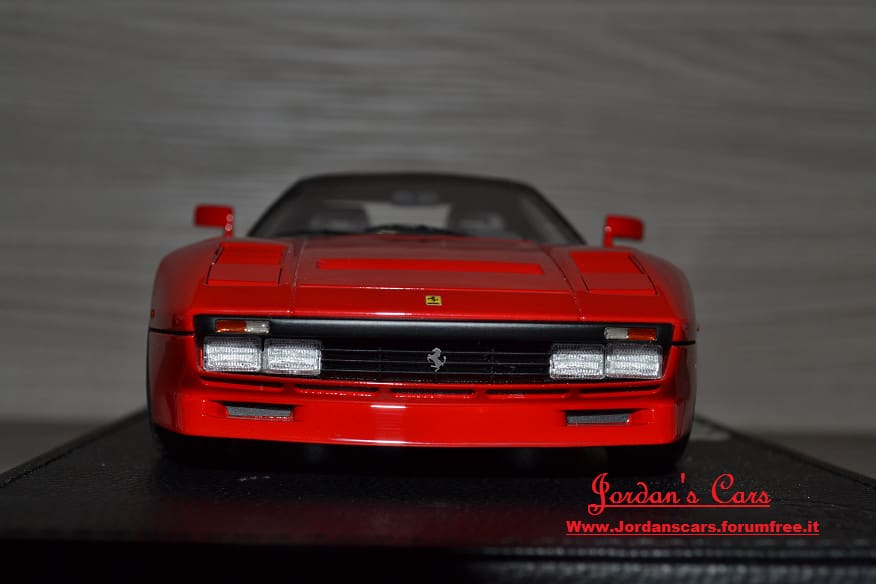
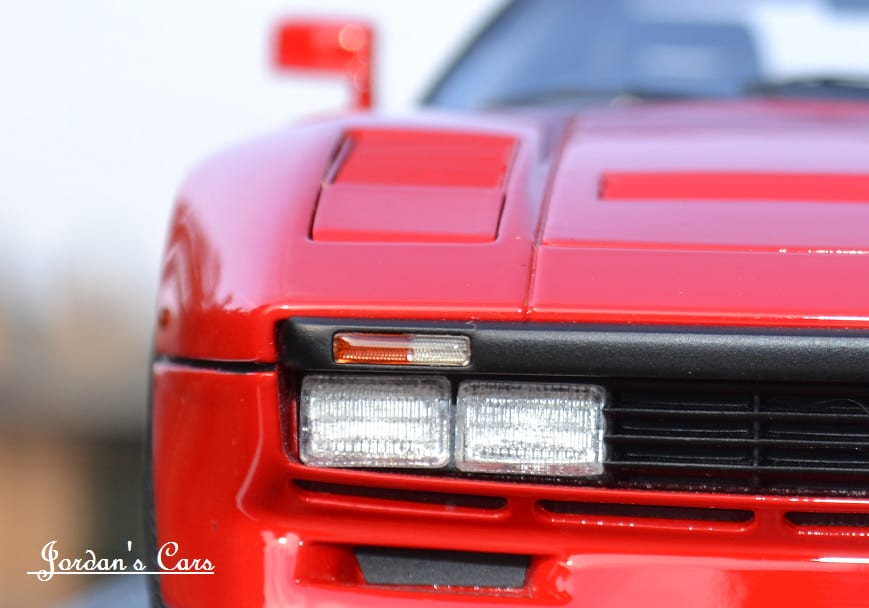
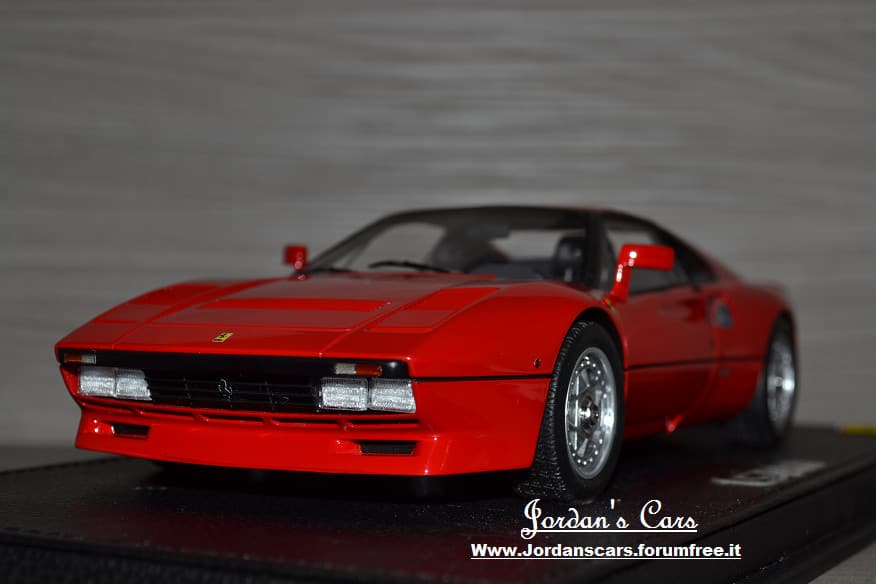
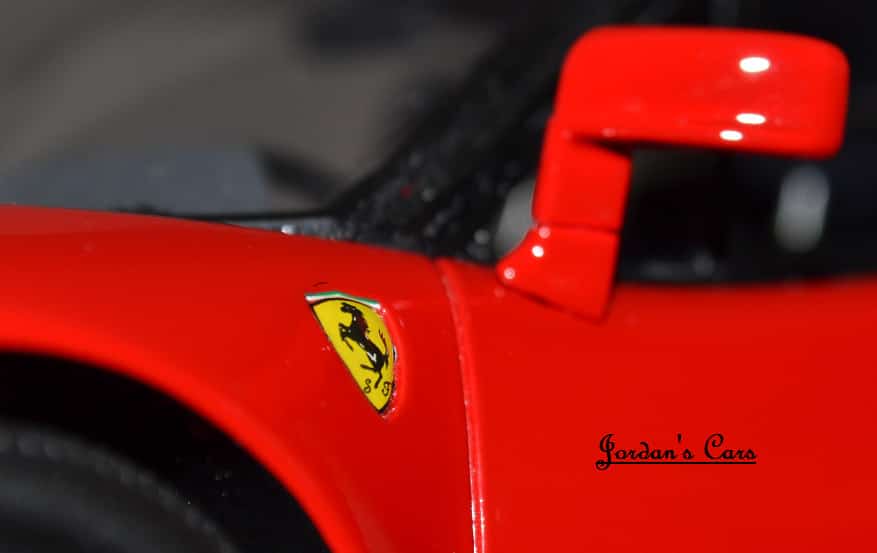
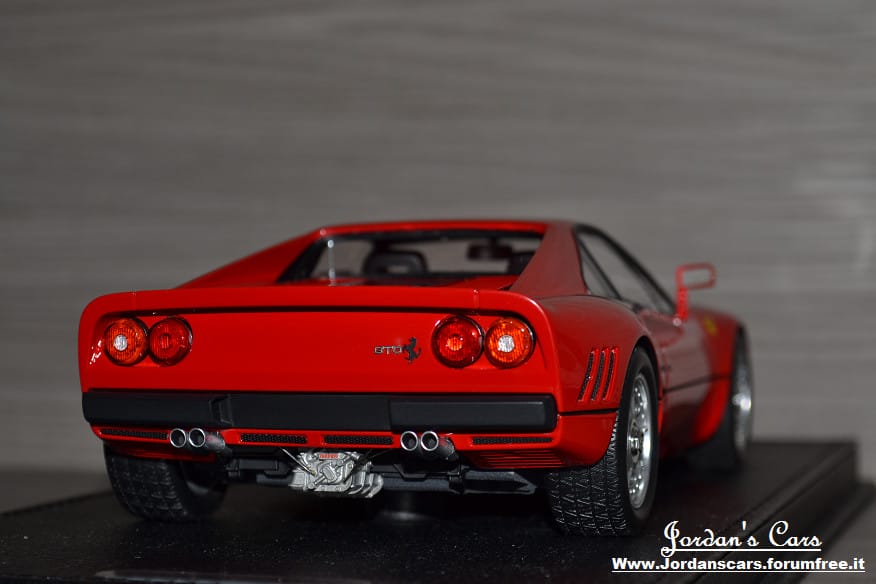
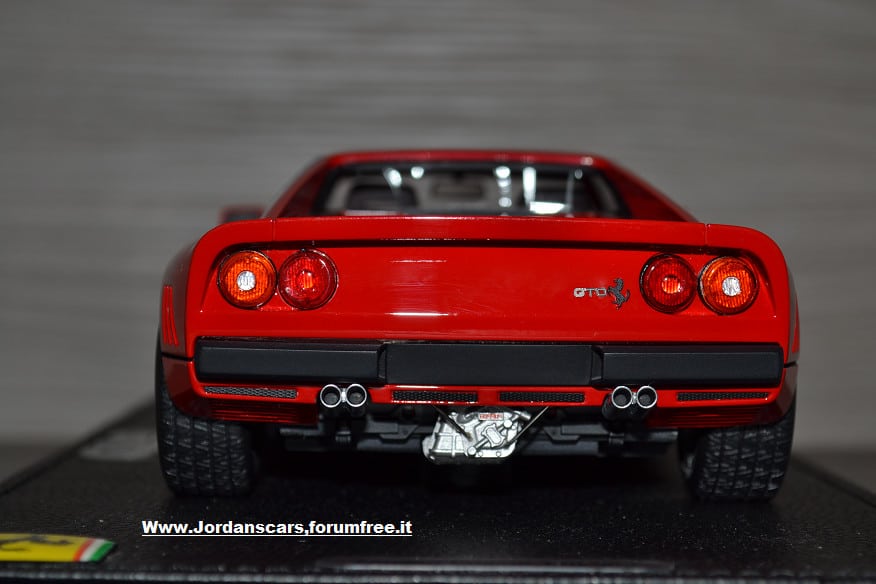
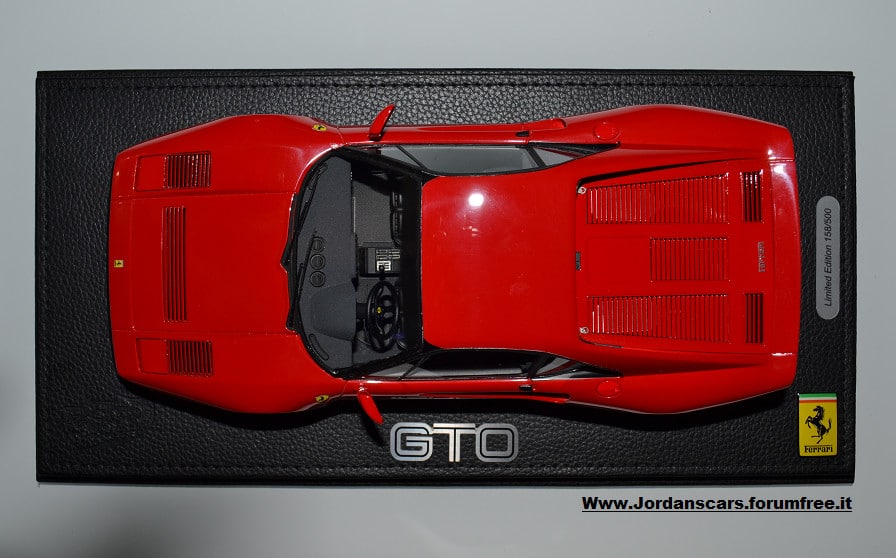
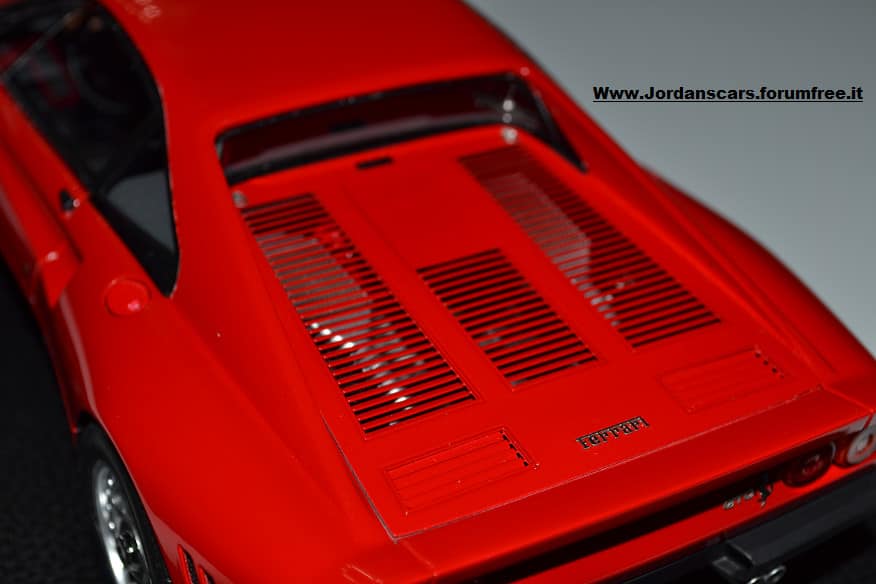
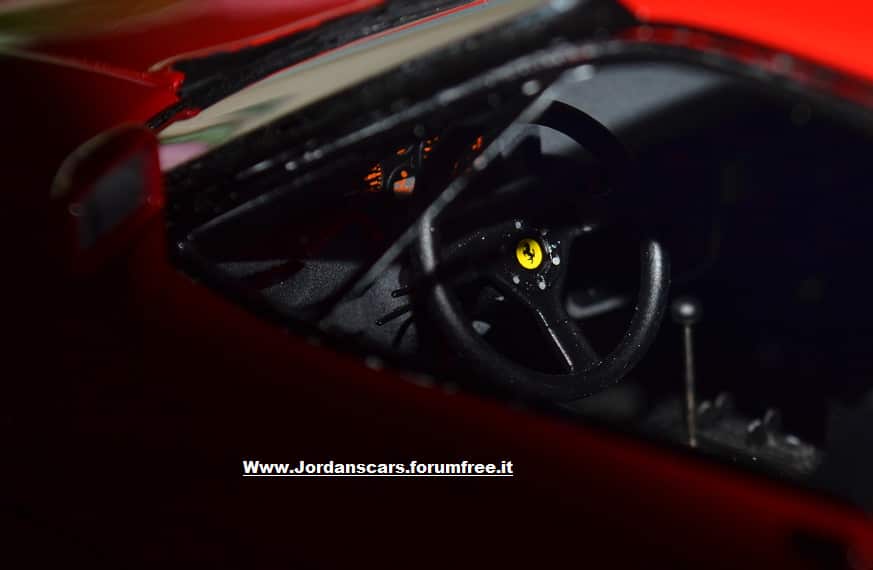
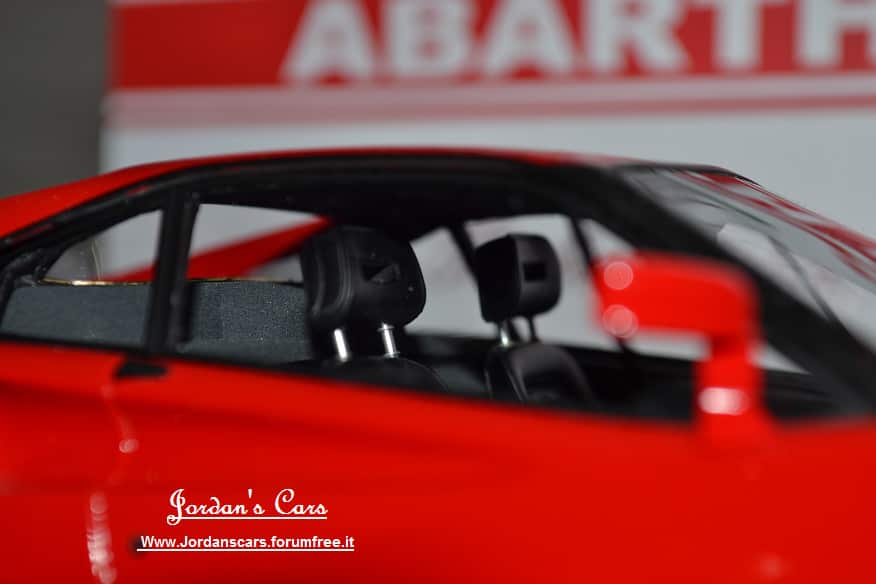
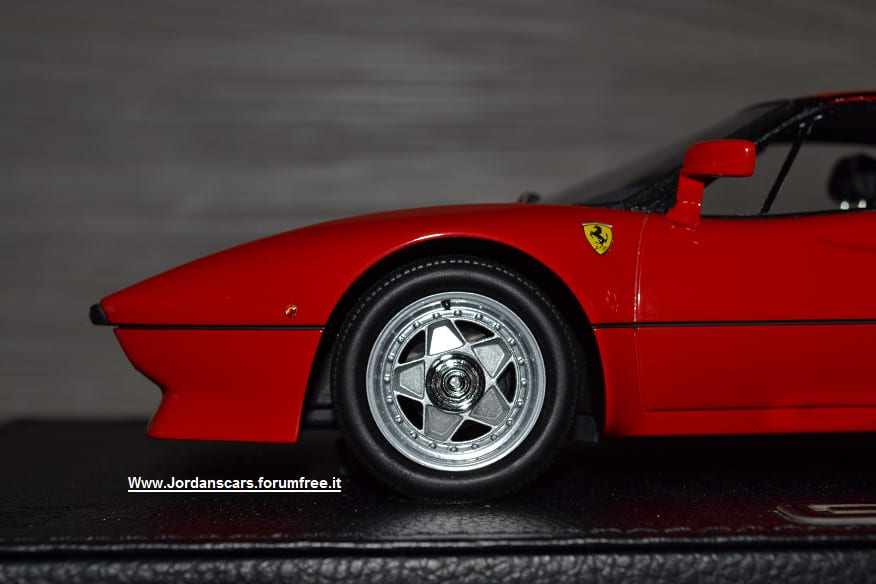
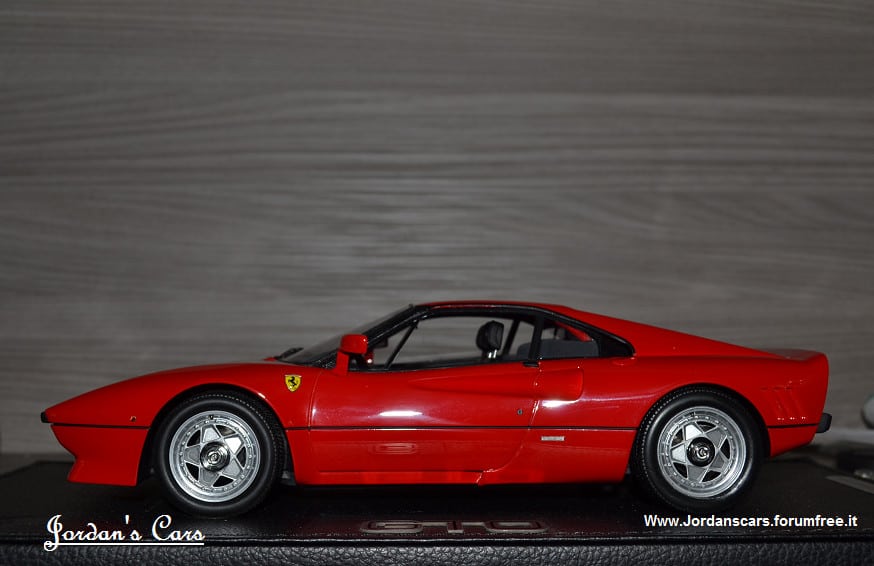
STORIA DELL'AUTO(wiki):
La Ferrari GTO, anche conosciuta come Ferrari 288 GTO, è un'autovettura prodotta dalla casa automobilistica italiana Ferrari tra il 1984 ed il 1985 in soli 272 esemplari.
Lo sviluppo della 288 GTO venne avviato, partendo dalla meccanica della 308 GTB per partecipare alle gare del Gruppo B.
Il capo progettista Ferrari, Mauro Forghieri, coinvolse nella progettazione del nuovo modello anche la Michelotto Automobili (scuderia che correva con delle 308 GTB dotate di carrozzeria in vetroresina).
A sottolineare la derivazione dalla 308 GTB della 288 GTO, presentata al salone dell'automobile di Ginevra del 1984, contribuiva anche la linea di Pininfarina. Esteticamente la nuova sportiva di Maranello appariva come una 308 GTB dalla indole e estetica più estrema, essendo una ulteriore esasperazione di quanto proposto a livello stilistico con lo studio 308 GTB Speciale, conosciuta anche come Millechiodi: i parafanghi sono allargati per ospitare pneumatici da 225/55VR16 davanti e 265/50VR16 dietro, lo spoiler posteriore è maggiorato, le feritoie laterali ricordano quelle della 250 GTO, sotto la calandra un generoso spoiler ospitava i gruppi ottici e la carrozzeria completamente nuova era in kevlar. Il motore V8, la cui cilindrata era stata ridotta a 2855 cm³ (e dal quale derivò il motore delle sport-prototipo Lancia LC2), veniva sovralimentato da due turbocompressori IHI con due intercooler ed era montato longitudinalmente, a differenza della 308 GTB dotata di gruppo motore-cambio trasversale. Il cambio, dotato di radiatore dell'olio, era inoltre montato a sbalzo dietro al propulsore. Fu la prima Ferrari dotata di iniezione elettronica derivata dalla Formula 1, denominata Weber-Marelli IAW che ne migliorava la fluidità di erogazione, mantenendo inalterato la vocazione da auto da corsa.
Con una pressione di sovralimentazione di 0,9 bar e 400 CV di potenza massima e 496 Nm, per la 288 GTO erano dichiarati 305 km/h di velocità massima e un tempo di 12,7 secondi per coprire i 400 metri con partenza da fermo. Nonostante i dati prestazionali della vettura, priva di dispositivi elettronici di controllo, era assai impegnativa da controllare a causa anche dell'erogazione della potenza poco lineare, dovuta al ritardo di risposta dei motori turbo di quegli anni.
Il programma di partecipazione alle competizioni non venne mai portato a termine, ma i 272 esemplari di GTO, tutti prodotti nel classico colore Rosso Corsa, furono venduti rapidamente su prenotazione, ancora prima che la vettura entrasse in produzione.
La sua erede fu la F40 del 1987, dotata di un'evoluzione dello stesso propulsore.
Prima dell'avvio di produzione della vettura, la Ferrari costruì 4 prototipi della 288 GTO. Due di queste auto sono andate distrutte nel corso dei crash test. Un'altra è stata smontata e i componenti sono stati venduti come ricambi ad un cliente Ferrari la cui auto aveva subito un incidente. Solo una di queste vetture (con telaio 47649) resta quindi l'unica vettura sperimentale esistente ed essendo un prototipo non risulta tra i 272 esemplari di serie. L'auto è rimasta di proprietà della Ferrari fino al 1987 quando un cliente speciale Ferrari è riuscito ad acquistarla. Oggi l'auto si trova in condizioni originali eccellenti ed è stata scrupolosamente sottoposta a degli interventi di manutenzione presso il reparto Ferrari Classiche.
Nel corso del 1985 vennero costruiti 5 esemplari di 288 GTO Evoluzione allo scopo di schierarli nelle competizioni aperte al Gruppo B. La messa al bando per motivi di sicurezza, a partire dal 1987, di tale categoria convinse la Ferrari a trasformarle in vetture-laboratorio.
Le modifiche apportate comprendevano una nuova veste aerodinamica per la carrozzeria, interventi di rinforzo del telaio e alleggerimento della carrozzeria (con la massa totale ridotta a 940 kg) e l'elaborazione del motore (potenziato a 650 CV mediante l'uso di turbocompressori di dimensioni maggiori, pistoni riprogettati e altri adeguamenti): a seguito di questi interventi la velocità massima è stata teorizzata intorno a 360 km/h, molto vicina a quella degli sportprototipi che dominavano la scena in quegli anni e con cui avrebbe dovuto competere nelle gare endurance.
A occuparsi dell'allestimento di quelli che, di fatto, sarebbero stati a tutti gli effetti i muletti della successiva F40, fu direttamente la carrozzeria Michelotto di Padova.
___________________________________________________________________
The Ferrari GTO (often referred to as Ferrari 288 GTO) is an exotic homologation of the Ferrari 308 GTB produced from 1984 through 1987, designated GT for Gran Turismo and O for Omologato (homologated in Italian).
The Ferrari GTO was built to compete in the new Group B Race series and a minimum of 200 cars were required for homologation. However, after the death of Henri Toivonen and his co-driver Sergio Cresto in the 1986 Tour de Corse, the FIA disestablished the class, leaving just the Group A Rally championship. As a result, the GTO never raced and all 272 cars built remained purely road cars.
Some of the GTO's styling features were first displayed on a 308 GTB design exercise by Pininfarina shown at the 1977 Geneva Salon. The 288 GTO started out as a modified version of the 308/328 to hold down costs and to build the car quickly, but little of the 308/328 was left when the 288 GTO was finished. Easily noticeable differences were the GTOs bulging fender flares, larger front/rear spoilers, large "flag-style" outside mirrors and four driving lights at the far sides of the grille. Retained from the original 250 GTO were slanted air vents, put in the GTO's rear fenders to cool the brakes. The GTO also had wider body panels than the 308's because they had to cover much larger Goodyear tires mounted on racing wheels. The suspension's height could be set higher for road use and lower for racing on tracks. Bodywork material was new and lighter for better acceleration and handing. The GTO's weight was only 2,555 pounds, compared to 3,085-3,350 for the 308/328. Steel was used just for the doors because major body panels were made from molded fiberglass. Kevlar was used for the hood, and the roof was made from Kevlar and carbon fiber.
The GTO was based on the mid-engine, rear wheel drive 308 GTB (which has a 3.0 litre V8 engine). The "288" refers to the GTO's 2.8 litre V8 engine as it used a de-bored (by 1 mm) V8 with twin IHI turbochargers, intercoolers, and Weber-Marelli fuel injection. The 2855 cc engine capacity was dictated by the FIA's requirement for a Turbocharged engine's capacity to be multiplied by 1.4. This gave the GTO a theoretical engine capacity of 3997 cc, just under the Group B limit of 4.0 litres.
Unlike the 308's 2926 cc engine, the GTO's 2855 cc engine was mounted longitudinally, using the 308's rear trunk space. This was necessary to make room for the twin turbochargers and intercoolers. The racing transmission was mounted to the rear of the longitudinal engine, moving the rear differential and wheels aft. The arrangement also let the GTO use a more conventional race-car engine/transmission layout for such things as quick gear ratio changes for various tracks. As a result, the wheelbase was 110 mm (4.3 in) longer at 2,450 mm (96 in). The track was also widened to accommodate wider wheels and tires (Goodyear NCT 225/55 VR16 tires mounted on 8 x 16 inch Speedline wheels at the front and 265/50 VR16 mounted on 10 x 16 inch wheels at the rear) to provide increased cornering and braking performance and the ability to apply 400 hp (298 kW) and 366 lb·ft (496 N·m) of torque to the ground. The GTO was an impressive performer, with 0-60 mph times around 5 seconds. Ferrari claimed 0-125 mph (201 km/h) in 15 seconds flat and a top speed of 189 mph (304 km/h), making it the first street-legal production car to reach 300 km/h (186 mph).
Ferrari also built five 288 GTO Evoluzione models with more aggressive and aerodynamic body styling and increase
d power. The engine in the 288 GTO Evoluzione originally put out as much as 650 hp (480 kW). With weight of 940 kg (2,072 lb) the car had a top speed of 225 mph (362 km/h).[5] These cars form the clearest visual link between the 288 GTO and the F40 soon to follow.
All five are still in existence with one owned by the Factory on display in the engine manufacturing facility in Maranello.

MODELLI CORRELATI:
FERRARI F40 ----> https://jordanscars.forumfree.it/?t=72800669
|
|














 .
. .
.





